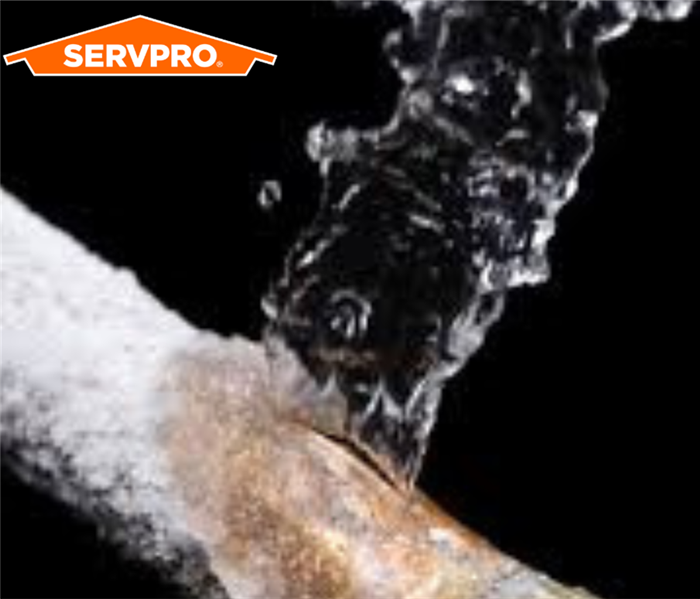Ideas on how to prevent pipes from freezing
11/7/2022 (Permalink)
Frozen pipes could be a big problem and can be prevented.
In addition to conducting regular winter home maintenance, protecting pipes from freezing is important. Even a tiny crack in a pipe can spew hundreds of gallons of water causing flooding, damage to your furnace and serious structural damage. It also presents an immediate potential for mold.
Frozen water pipes are a problem in both cold and warmer climates, affecting families each winter. It can occur in homes with both plastic and copper pipes. By taking the preventative measures below, you may help reduce the risk of frozen water pipes and the resulting property damage.
Tips to help prevent pipes from freezing
The three central causes of frozen pipes are quick drops in temperature, poor insulation and thermostats set too low. You can prepare your home during the warmer months.
- Insulate pipes. Pipe insulation in your home's crawl spaces and attic helps even if you live in a climate where freezing is uncommon. Exposed pipes are most susceptible to freezing. Remember, the more insulation you use, the better protected your pipes will be.
- Use heat tape or heat cables. Heat tape or thermostatically controlled heat cables can be used to wrap pipes. Be sure to use products approved by an independent testing organization, such as Underwriters Laboratories Inc., and only for the use intended (exterior or interior). Closely follow all manufacturer's installation and operation instructions.
- Seal leaks. Locate and thoroughly seal leaks that allow cold air inside. Look for air leaks around electrical wiring, dryer vents and pipes, and use caulk or insulation to keep the cold out.
- Secure outdoor hoses, valves and faucets. Before winter hits, disconnect garden hoses and, if possible, use an indoor valve to shut off and drain water from pipes leading to outside faucets. This reduces the chance of freezing in the short span of pipe just inside the house.
- Let water drip. A trickle of hot and cold water might be all it takes to keep your pipes from freezing. Let warm water drip overnight when temperatures are cold, preferably from a faucet on an outside wall.
- Adjust the thermostat. Keeping your thermostat set at the same temperature during both day and night also reduces the risk of frozen pipes. During extreme cold, this also helps reduce the strain on the furnace.
- Open cabinet doors. This allows heat to get to un-insulated pipes under sinks and appliances near exterior walls.






 24/7 Emergency Service
24/7 Emergency Service
